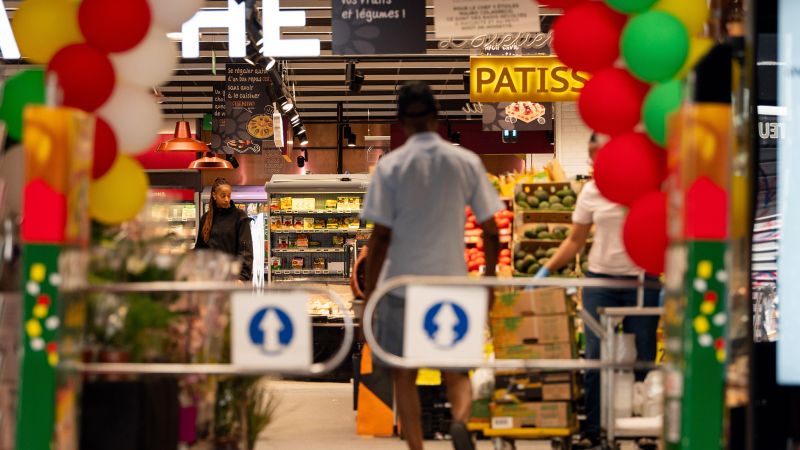London
CNN
—
The euro area economy is growing again, but may struggle to maintain the momentum for the rest of the year.
Gross domestic product across the 20 countries that share the euro currency rose by 0.3% in the second quarter, compared with the previous three months, according to an official estimate published Monday.
GDP had fallen by 0.1% in the last three months of 2022, and stagnated in the first quarter of this year.
Separately, official data showed that the overall rate of inflation continued to fall this month. The consumer price index for the euro area rose by 5.3%, down from 5.5% in June.
But core inflation — which strips out volatile food and energy costs — was unchanged at 5.5% in July. And inflation for services and unprocessed food ticked up to 5.6% and 9.2% respectively.
Despite the encouraging economic data, there are signs that the region could be heading towards stagnation for the rest of the year.
“Today’s data broadly validates our near-term outlook, which anticipates very weak growth in H2, and a summer moderation in the pace of disinflation followed by a relatively sharp fall in Q4,” analysts at Oxford Economics wrote in a note on Monday.
The euro area economy was hit hard last winter by the huge increase in energy prices that followed Russia’s invasion of Ukraine — but data from Europe’s two biggest economies on Friday had signaled that a recovery was underway.
“Digesting the Putin shock of high energy and food prices, the eurozone economy has regained a little momentum in the last few months,” analysts at Berenberg said in a research note on Monday. “Like the US, the eurozone has so far weathered the recent challenges better than expected,” they added.
However, the bank expects growth to stagnate over the rest of the year, partly as a result of a sluggish Chinese economy, weakness in global manufacturing and a decline in residential construction, capping annual growth at just 0.6%. It’s forecasting average growth to pick up to 1% in 2024.
French GDP grew by 0.5% in the second quarter, compared with the first quarter of this year, beating economists’ expectations, according to official statistics released on Friday. Germany stagnated last quarter, but that was a modest improvement from the previous six months, when Europe’s biggest economy was stuck in recession.
Michael Probst/AP
Containers in Frankfurt, Germany. Europe’s top economy has stopped shrinking but is struggling to grow.
Holger Schmieding, chief economist at Berenberg, said in a Friday note that France’s better-than-expected growth figures were “entirely due to very strong exports,” while domestic indicators of demand “performed much worse,” including a 0.4% drop in household consumption.
“The delivery of a cruise ship to a foreign buyer contributed notably to this one-off gain in exports,” he added.
Demand for business loans in the euro area fell to a record low in the second quarter, according to a survey published by the ECB last week. Separate survey data showed that business activity contracted at the fastest pace in eight months in July.
An initial reading of the Purchasing Managers’ Index, which tracks activity in the manufacturing and service sectors, dropped to 48.9 from 49.9 in June. A reading below 50 indicates a contraction.
The European Central Bank raised the benchmark interest rate in the euro area by a quarter of a percentage point to 3.75% on Thursday, the central bank’s ninth consecutive hike.
But ECB President Christine Lagarde told journalists that she was considering a pause in hiking rates at the central bank’s next meeting in September.
Consumer price inflation has fallen sharply from a record 10.6% in October 2022 but is still well above the ECB’s 2% target.

